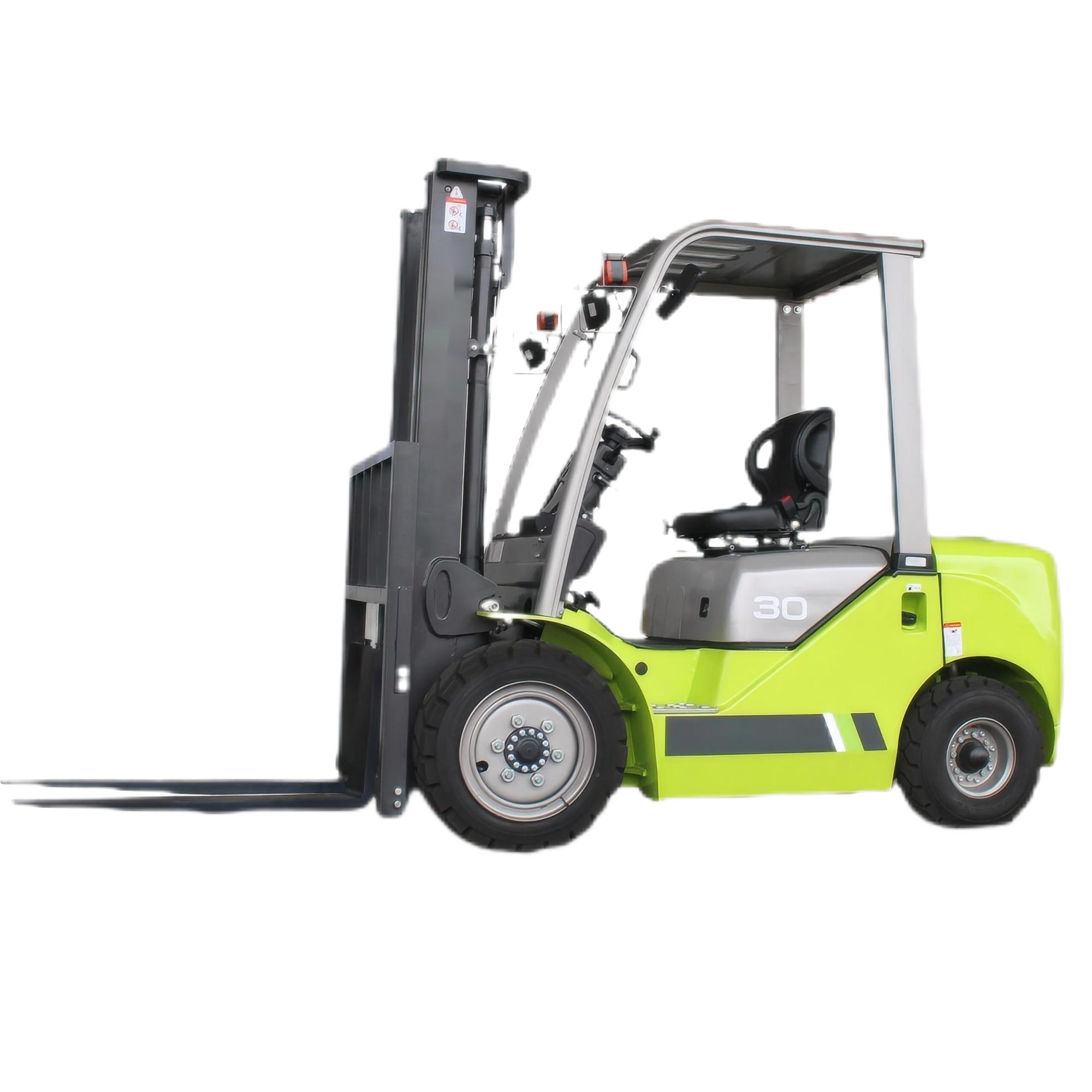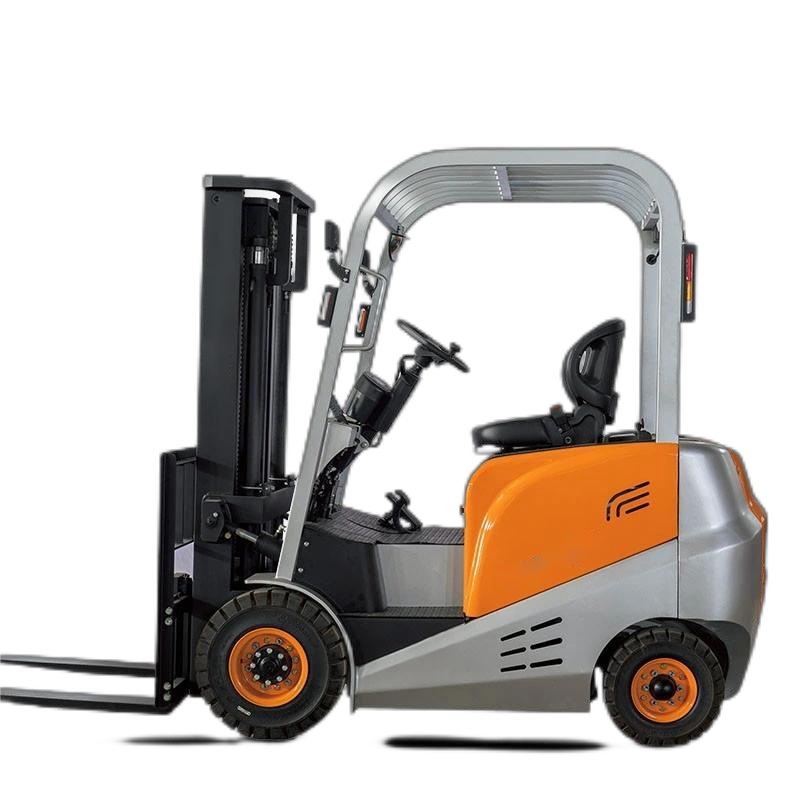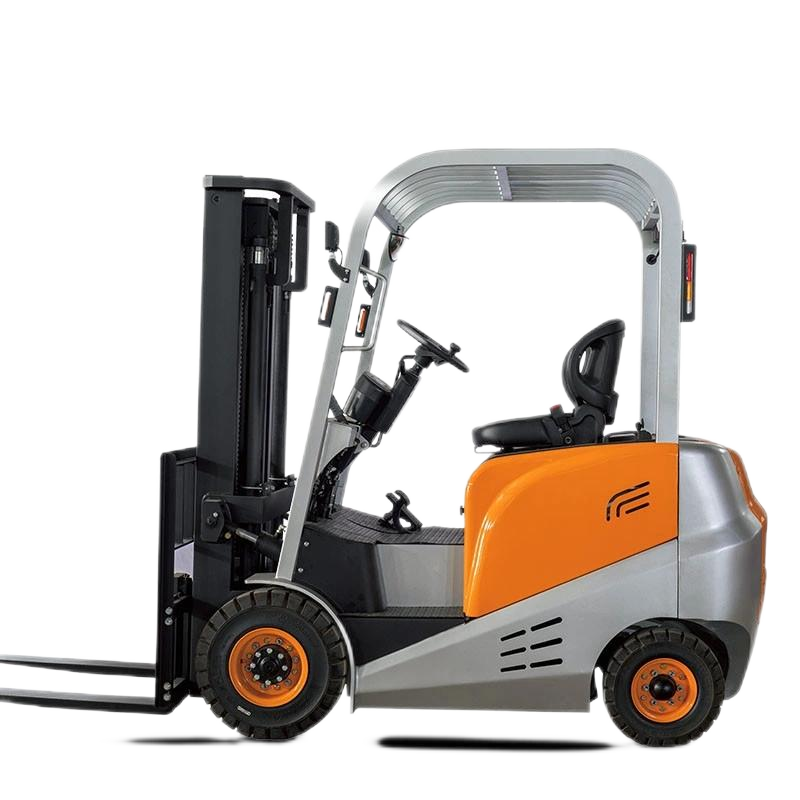The 10-ton electric forklift is a relatively large-scale electric industrial handling vehicle. The following is the relevant introduction:

Features
Power and Load Capacity: Equipped with a high-performance electric drive system, it provides strong power and can stably carry and handle 10 tons of goods, meeting the handling needs of various heavy-duty materials.
Environmental Protection and Energy Conservation: Using electricity as the power source, it has no pollution emissions. It can reduce environmental pollution both indoors and outdoors, and is especially suitable for places with high environmental protection requirements, such as food and pharmaceutical production workshops and warehouses.
Low Noise: The noise during operation is significantly lower than that of internal combustion forklifts. It can create a relatively quiet working environment, reduce the noise hazard to operators, and is also suitable for use in areas with strict noise restrictions.
Convenient Operation: Adopting an advanced electronic control system, the operation handle is designed ergonomically, enabling precise control. It can flexibly perform operations such as moving forward, backward, turning, and lifting and lowering goods, reducing the labor intensity of operators.
Low Maintenance Cost: Compared with internal combustion forklifts, the electric forklift has a simple mechanical structure, without complex components such as engines and transmissions, reducing the number of vulnerable parts. Daily maintenance mainly focuses on the battery, motor, and electronic control system, with a small maintenance workload and low cost.
Power and Load Capacity: Equipped with a high-performance electric drive system, it provides strong power and can stably carry and handle 10 tons of goods, meeting the handling needs of various heavy-duty materials.
Environmental Protection and Energy Conservation: Using electricity as the power source, it has no pollution emissions. It can reduce environmental pollution both indoors and outdoors, and is especially suitable for places with high environmental protection requirements, such as food and pharmaceutical production workshops and warehouses.
Low Noise: The noise during operation is significantly lower than that of internal combustion forklifts. It can create a relatively quiet working environment, reduce the noise hazard to operators, and is also suitable for use in areas with strict noise restrictions.
Convenient Operation: Adopting an advanced electronic control system, the operation handle is designed ergonomically, enabling precise control. It can flexibly perform operations such as moving forward, backward, turning, and lifting and lowering goods, reducing the labor intensity of operators.
Low Maintenance Cost: Compared with internal combustion forklifts, the electric forklift has a simple mechanical structure, without complex components such as engines and transmissions, reducing the number of vulnerable parts. Daily maintenance mainly focuses on the battery, motor, and electronic control system, with a small maintenance workload and low cost.
Technical Parameters
Lifting Capacity: 10,000 kilograms.
Load Center: Usually between 600 and 1200 millimeters, specifically varying according to the design and model of the forklift. This parameter determines the stability and lifting capacity of the forklift under different load distributions.
Wheelbase: Generally within the range of 3000 to 3800 millimeters. A longer wheelbase helps to improve the stability of the forklift when fully loaded.
Mast Height: The common mast height is about 3 to 7 meters, and it can be customized according to the actual use scenario and the stacking height of goods.
Travel Speed: The full-load travel speed is generally 10 to 18 kilometers per hour, and the no-load travel speed can reach 18 to 25 kilometers per hour. The reasonable design of the speed not only ensures work efficiency but also takes into account operational safety.
Lifting Speed: The full-load lifting speed is approximately 0.2 to 0.5 meters per second, and the no-load lifting speed will be faster, reaching 0.3 to 0.6 meters per second. The lifting speed directly affects the efficiency of loading and unloading goods.
Lifting Capacity: 10,000 kilograms.
Load Center: Usually between 600 and 1200 millimeters, specifically varying according to the design and model of the forklift. This parameter determines the stability and lifting capacity of the forklift under different load distributions.
Wheelbase: Generally within the range of 3000 to 3800 millimeters. A longer wheelbase helps to improve the stability of the forklift when fully loaded.
Mast Height: The common mast height is about 3 to 7 meters, and it can be customized according to the actual use scenario and the stacking height of goods.
Travel Speed: The full-load travel speed is generally 10 to 18 kilometers per hour, and the no-load travel speed can reach 18 to 25 kilometers per hour. The reasonable design of the speed not only ensures work efficiency but also takes into account operational safety.
Lifting Speed: The full-load lifting speed is approximately 0.2 to 0.5 meters per second, and the no-load lifting speed will be faster, reaching 0.3 to 0.6 meters per second. The lifting speed directly affects the efficiency of loading and unloading goods.
Battery Types
Lead-acid Batteries: The technology is mature, and the cost is relatively low. The cycle life is generally about 1000 to 1500 times, and the battery efficiency is about 70% to 75%. The charging time is long, usually taking 6 to 8 hours to fully charge. Moreover, hydrogen is generated during the charging process, so charging needs to be carried out in a well-ventilated environment. For frequently used forklifts, spare batteries may be required to ensure continuous operation.
Lithium Batteries: They have the advantages of high energy density, long cycle life, and low self-discharge rate. The cycle life can reach 2000 to 5000 times, and the battery efficiency can reach 90% to 95%. They support fast charging and opportunity charging, and can replenish the power in a short time, which is suitable for continuous operation in multiple shifts. At the same time, lithium batteries are relatively light in weight, helping to improve the overall performance of the forklift.
Lead-acid Batteries: The technology is mature, and the cost is relatively low. The cycle life is generally about 1000 to 1500 times, and the battery efficiency is about 70% to 75%. The charging time is long, usually taking 6 to 8 hours to fully charge. Moreover, hydrogen is generated during the charging process, so charging needs to be carried out in a well-ventilated environment. For frequently used forklifts, spare batteries may be required to ensure continuous operation.
Lithium Batteries: They have the advantages of high energy density, long cycle life, and low self-discharge rate. The cycle life can reach 2000 to 5000 times, and the battery efficiency can reach 90% to 95%. They support fast charging and opportunity charging, and can replenish the power in a short time, which is suitable for continuous operation in multiple shifts. At the same time, lithium batteries are relatively light in weight, helping to improve the overall performance of the forklift.
Application Scenarios
Large Warehouses and Logistics Centers: In large warehousing and logistics places, it is used for the stacking, handling, and loading/unloading operations of heavy goods, and can quickly and efficiently complete the inbound and outbound operations of goods, improving the efficiency of logistics operations.
Production and Manufacturing Workshops: In large production workshops such as automobile manufacturing and mechanical processing, it is used for the transportation and circulation of raw materials, components, and finished products, and can closely cooperate with the production line to ensure the smooth progress of the production process.
Ports and Terminals: It can undertake tasks such as container loading and unloading and bulk cargo handling at ports and terminals. Its environmental protection performance meets the development requirements of green logistics in ports, and its powerful lifting capacity can also meet the needs of port cargo operations.
Railway Freight Yards: In railway freight yards, it is used for the loading, unloading, and transfer of goods. The low noise and environmental protection characteristics of the electric forklift help to reduce the impact on the surrounding environment and improve the safety and comfort of operations.
Large Warehouses and Logistics Centers: In large warehousing and logistics places, it is used for the stacking, handling, and loading/unloading operations of heavy goods, and can quickly and efficiently complete the inbound and outbound operations of goods, improving the efficiency of logistics operations.
Production and Manufacturing Workshops: In large production workshops such as automobile manufacturing and mechanical processing, it is used for the transportation and circulation of raw materials, components, and finished products, and can closely cooperate with the production line to ensure the smooth progress of the production process.
Ports and Terminals: It can undertake tasks such as container loading and unloading and bulk cargo handling at ports and terminals. Its environmental protection performance meets the development requirements of green logistics in ports, and its powerful lifting capacity can also meet the needs of port cargo operations.
Railway Freight Yards: In railway freight yards, it is used for the loading, unloading, and transfer of goods. The low noise and environmental protection characteristics of the electric forklift help to reduce the impact on the surrounding environment and improve the safety and comfort of operations.







